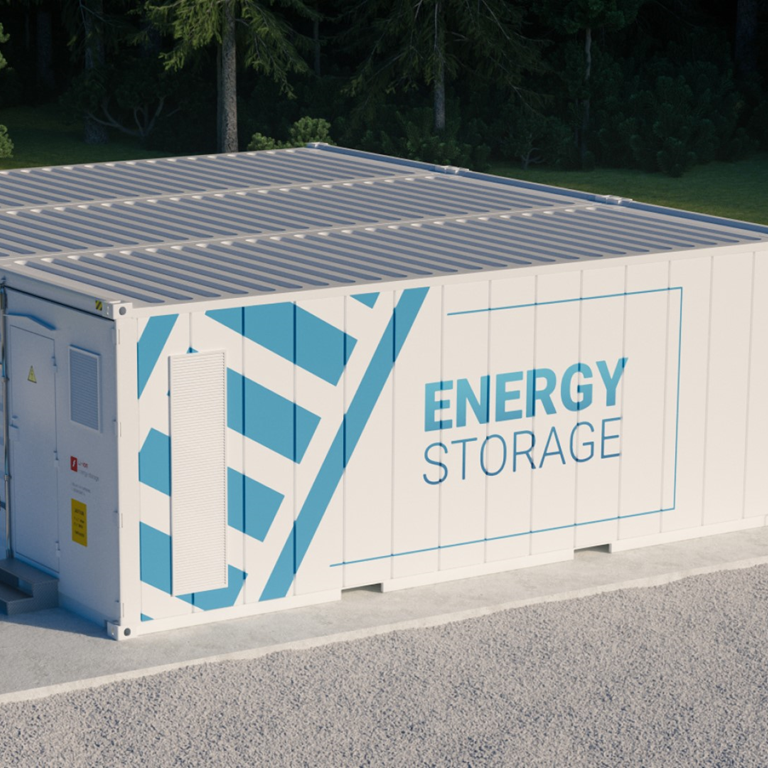Battery energy storage systems (BESS) play an important role in the development of renewable energy sources in the UK energy system. They will continue to do so increasingly in the future.
Grid-scale battery storage systems are often co-located with renewable energy projects. This can include numerous technologies such as wind and solar energy supply. They charge during energy production and discharge to the grid when demand is highest. This process enhances renewable energy generation.
Standalone BESS projects balance grid demand fluctuations by charging and discharging directly from the grid. This helps ensure a continuous energy supply.
While this presents opportunities, there are also several risk and insurance coverage areas that developers must consider. These considerations are crucial when embarking on projects.
BESS design-stage risks
The benefits of combining BESS with renewable energy projects are clear. But what are the risk management considerations?
Thermal runaway and fires
Like standalone BESS projects, thermal runaway and fires are significant risks for BESS combined with solar or wind projects. This is particularly true for lithium-ion batteries.
As detailed below, thermal runaway results from a chain reaction. This occurs when a:
- misused;
- improperly stored;
- or damaged battery begins to release energy in the form of heat.
This leads to further damage in a negative feedback loop. As a result, rapid heating can occur, which may cause the build-up of an explosive atmosphere and fire.
The only way to stop thermal runaway is rapid cooling of the affected cell(s). Another approach is to separate the affected battery module and let the reaction safely reach its conclusion.
Note that even if the fire is suppressed, thermal runaway alone can generate enough heat to damage adjacent cells and spread the reaction. Therefore, essential elements include:
- thermal management;
- fire suppression;
- and physical design layout to isolate batteries from each other.
These measures are essential to protect a BESS installation from a thermal runaway event in a single cell.
Some of the possible causes of fires include:
- Temperature control
- Inherent cell defects
- Damage during construction
- Operation of the BESS outside of recommended parameters (temperature, charge rate, state of charge, etc.)
- Damage due to operational negligence.
This is a potentially serious risk and there have been incidents when lives have tragically been lost. As specialist insurance brokers, we have insights into these exposures. We can help project developers mitigate and assess risks both in the planning stages and throughout the life of a project.
Insurer design requirements
When designing such sites, it’s important to ensure there is enough separation. Not just within the battery components themselves. It is also important to maintain adequate separation between BESS structures and critical linkages. Such as the main project site transformers and substations. This ensures that should an incident occur, other key components are not damaged and losses are minimised.
With recent advances in battery storage technology, many site owners are considering adding a BESS to existing solar or wind farms. Renewable energy sites are often fairly open, with plenty of available space. This means that the construction exposure for adding a battery system is relatively low.
Furthermore, the risks associated with putting in foundations and cabling to the rest of the site are minimal. The largest risk here is connecting the BESS to the control centre. However, these risks are well understood by both developers and the insurance market. As a result, they are relatively easy to manage.
BESS operational exposures
Equipment warranties
Much of the equipment used in the development of BESS projects is subject to warranties. When underwriting these projects, insurance markets often consider these warranties. If a warranty covers certain risks related to equipment malfunction, insurers may feel more at ease. This can potentially lead to more favourable insurance terms. As a result, they may not need to include pricing for that risk in their quotes.
When warranties expire, however, the cost of insurance often increases accordingly. Frequently, a battery’s lifetime is shorter than a Power Purchase Agreement (PPA) entered into by a BESS project. For example, a battery life might be 10 years while a PPA could be for 30 years.
Batteries will likely need to be swapped out and replaced at least once, and possibly several times, during the course of a PPA. This is due to their shorter lifespan compared to the duration of the agreement. This changes the risk profile of the system being insured, as a new warranty will come into effect each time a new battery is used.
Separation
Once a site is operational, additional risks must be considered. The main focus is the interface between the battery and the renewable energy technology. It is important to determine if a loss in one will cause a loss in the other. Understanding how the battery storage system works is crucial. This is essential for managing risks related to equipment warranties and operational exposures.
Separation can minimise the impact of losses on both sides. It is also important to ensure that the output from the renewables project is not routed directly through the BESS. Otherwise, in the event of a battery outage, the whole site will be unable to produce revenue.
Routing the output to the grid separately from the BESS minimises business interruption losses. This ensures that the whole project’s operation and ability to generate profit are not entirely dependent on the battery.
Additionally, it is critical for the BESS to effectively manage electrical energy flow to maintain system stability and efficiency. This also plays a key role in optimising energy storage capacity. Implementing a robust battery management system is essential for monitoring the health and performance of the batteries.
As BESS/renewable combinations become more commonplace, insurers are becoming increasingly comfortable with their associated risks. Working with the same panel of insurers across both BESS and solar or wind sites can ensure consistent coverage. This approach helps to simplify the claims process. Any linked losses between elements will not need to be agreed upon between multiple parties.
Here to help
Combining BESS with a renewable energy project can be a valuable endeavour. However, it is essential to properly address the inherent risks.
Taking a thoughtful approach to risk management and working with the right risk advisor can help safeguard operations. This, in turn, ensures productivity and profitability.
For more help, get in touch with our renewable energy experts.
Real-world insight that we don't share anywhere else
Get access to exclusive help, advice and support, delivered straight to your inbox.


